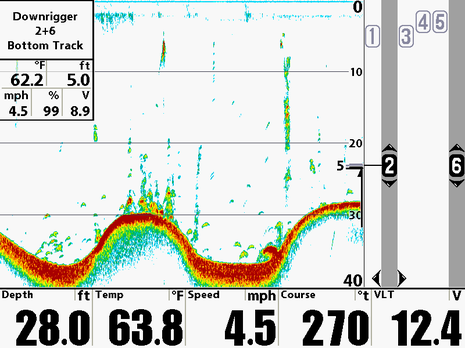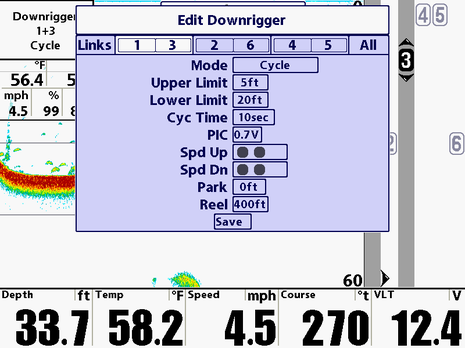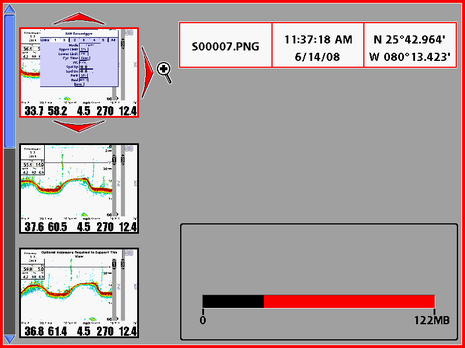Humminbird downrigger control, really different

I could easily write a dozen more entries on 18" radomes, AIS, NMEA 2000, and iPhone apps, but how about something completely different? I received and bench tested a loaner Humminbird 1197c this week. My plan is to check out its side-scanning abilities, particularly now that Lowrance is challenging its dominance in this niche. But I couldn't help but notice the rather amazing downrigger controls shown in the machine's demo mode. The screen above shows one of three downrigger pairs being automatically positioned 5 feet off the bottom as my simulated boat trolls a wavy bottom. And there's much more...
For instance, another downrigger or pair can be made to "cycle" up and down at a specific depth and speed. Or a user can just manually control his/her baits or jigs from the MFD. Not surprisingly, this "fishing system" only works with certain Canon downriggers, and a special interface box, all developed by Humminbird's parent company Johnson Outdoors, but still have you ever heard of a plotter managing anywhere near this level of mechanical activity? And now that you have, what else could an MFD do?

The 1197c also seems to pleasingly fast, and loaded with interesting features. Below, for instance, is the best sonar recording and screenshot display (and management) page I've seen on any MFD (and, thankfully, they almost all at least do screenshots these days).


 Share
Share
The inverse of this would be nice. Have your MFD control throttle & steering in concert with your AP in order to follow & troll a particular depth contour. Or have the downrigger raise & lower in response to fish detected by the sounder. Or have the MFD calculate drift due to current and wind then control course & speed so as to keep your boat stationary over deep fish holding structure. Or . . . just a fish catching video game so you don't even need to leave the dock?